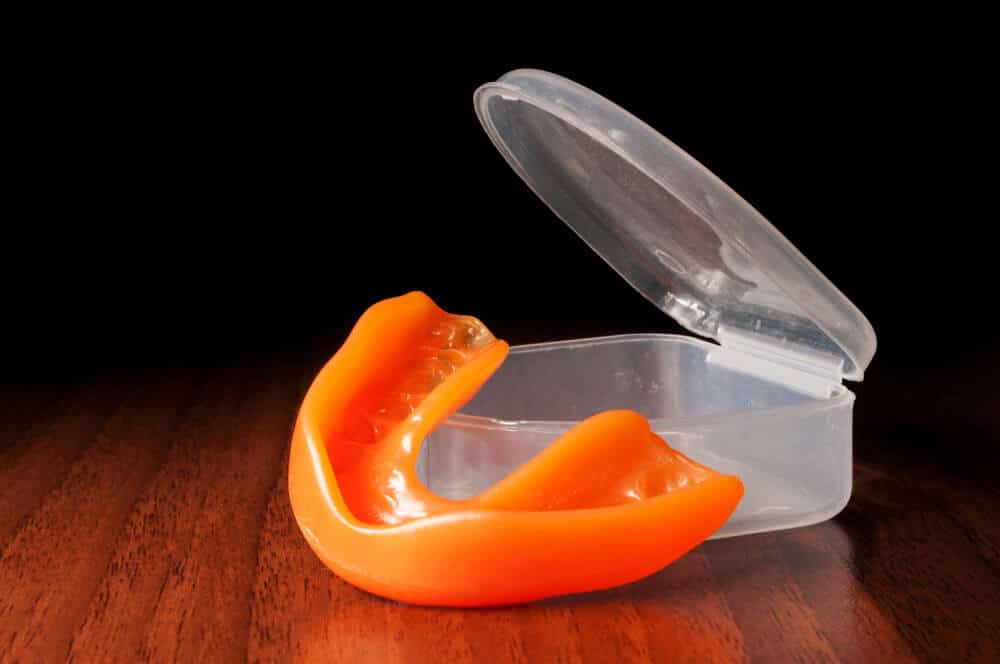Many dentists recommend getting dental mouthguards for teeth grinding protection if you play sport.
However, these small but mighty dental solutions are not all made the same. There are three main types of mouthguards, so read on to learn about the different types, including which one might be best for you.
Mouthguard types
Let’s talk about the three main mouthguard types, stock, boil and bite, and custom-made.
Stock mouthguards
These mouthguards are the most widely available and affordable type of mouthguard. Typically used for protection during sport, you can find them at most sporting goods stores and chemists.
They usually come in three sizes (small, medium, and large) and fit over your teeth. Most stock mouthguards cover your top teeth. While cheap, due to the limited sizing options, these can be uncomfortable and might not provide a tight fit.
Boil-and-bite mouthguards
Like stock mouthguards, boil-and-bite mouthguards are often sold by chemists and are relatively inexpensive. These tend to come in one size, which you customise to fit your teeth. As the name suggests, you do this by boiling the mouthguard in water until it softens, then placing it over your front teeth and biting down.
To get the best fit, ensure you carefully follow the product instructions that come with it. Despite this the accuracy of fit is unpredictable as is the level of protection from injury.
Custom-made mouthguards
Your dentist can also make you a custom-fit mouthguard. Typically, this process involves us taking a mould of your teeth and using it to create a mouthguard to fit your unique teeth and mouth.
A custom-made mouthguard ensures a fantastic fit, making them much more comfortable to wear and unlikely to move around while in use.
Mouthguard care
Good maintenance will extend the lifespan of your mouthguard. To get the most out of your mouthguard, follow these steps:
- Thoroughly brush and floss your teeth before inserting your mouthguard.
- After use, rinse the mouthguard in cool water, then clean with a toothbrush.
- Inspect for holes or other signs of wear every few days.
- Bring your mouthguard to any dentist appointments.
- Store your mouthguard in a rigid, ventilated container to protect and allow it to dry out between uses.
- Keep your mouthguard out of reach of any pets, even if the guard is in a container – pets LOVE mouthguards.
Mouthguards don’t last forever. If you notice any holes or signs of wear, have it replaced.
Dentist in Victoria Park
If you are looking for a Dentist in Victoria Park, Perth to fit you for a dental mouthguard, our specialist team at Aardent Dental are the experts you need. Our dentists have a wealth of experience in cosmetic and general dentistry, and we pride ourselves on our service.
Please book an appointment with us today by calling our practice on 6330 8666.


Recent Comments